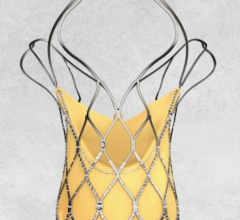May 29, 2007 — Stentys says the results of preclinical testing of its bifurcated stent were reported at last week's EuroPCR 2007 Cardiovascular Congress.
Stentys is the first company to develop the next-generation of dedicated drug-eluting stents for treatment of blocked coronary artery bifurcations so that hundreds of thousands of patients might avoid open-chest surgery.
"The Stentys device has been successfully evaluated in porcine coronary and renal arteries," said Jean-Claude Laborde, M.D., principal investigator, who is co-director of the interventional cardiology unit at Clinique Pasteur, Toulouse, France, and a member of the Scientific Advisory Board of Stentys. "In addition to determining the most suitable vessel diameters, our study achieved the primary endpoints of acute device success and acute procedure success. The acute device success was graded (0 to 3) for insertion, deployment of the stent and creation of the side branch, with grade 2 being the benchmark.
"The acute procedure success was defined as achieving TIMI (Thrombolysis In Myocardial Infarction) grade-3 flow in the main and side branch following deployment. The device achieved excellent results (87 percent and 92 percent, respectively) in both of the areas evaluated. Optimal apposition of the stent in the main vessel and side branch was confirmed with intravascular ultrasound (IVUS). The results clearly demonstrate that this frangible stent can split only when it is needed, while still offering excellent trackability, positioning and deployment."
The patent-pending innovation of Stentys'bifurcated stent is that the stent-opening for the side branch can be created anywhere in the stent after it is implanted in the vessel. In short, the procedure's success is independent from accurate positioning. The Stentys procedure is performed in three simple steps: (1) Stentys is implanted in the main vessel with an approximate positioning, like a standard stent; (2) the cardiologist chooses the optimal location for the side branch opening by inserting a balloon through the stent mesh, which is a cath lab-standard procedure; and, (3) the balloon inflation disconnects the mesh and creates the opening — the Stentys approach allows the in situ modeling of the stent to fit the patient's unique arterial anatomy.
Based in Paris, Stentys intends to make treatment of blocked coronary artery bifurcations as simple and effective as a regular stenting procedure.
For more information visit www.stentys.com.


 July 02, 2024
July 02, 2024 








